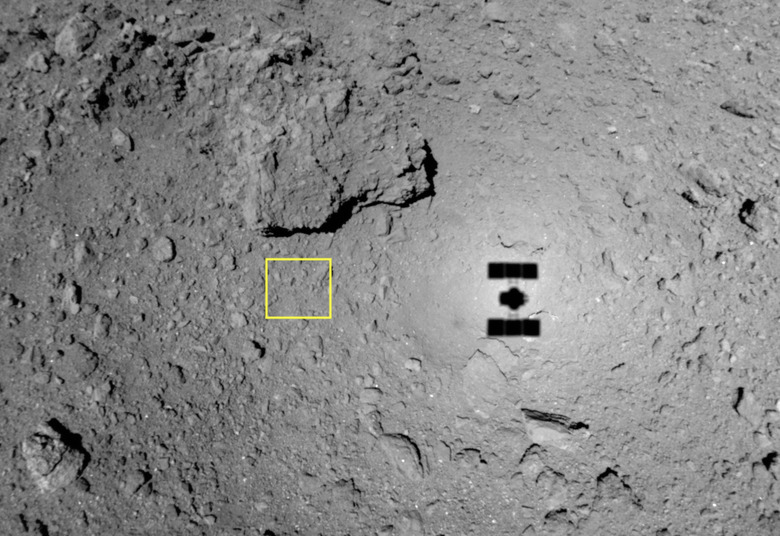Japan's Asteroid Probe Is Headed Back To Earth, And It's Carrying Precious Cargo
The Japanese space program JAXA has accomplished a lot in 2019. After successfully guiding its asteroid probe Hayabusa2 to the space rock known as Ryugu in late 2018, the team of scientists working on the mission pulled off a number of potentially dangerous stunts, including firing projectiles at the asteroid in order to collect samples.
The mission has seen its fair share of challenges, especially after it was revealed that Ryugu's surface was far rockier and debris-strewn than anyone could have guessed, but the sample-gathering maneuvers were successful. Now, after spending many months in orbit around the rock, Hayabusa2 is headed back to Earth.
It's impossible to overstate just how well things turned out for Hayabusa 2. After getting their first good look at Ryugu's surface, JAXA quickly realized that gathering samples was going to be riskier than expected. The scientists had to hunt for areas where the probe could fire its cannonball-like projectile and then dip down to grab the asteroid material before lifting back off again.
Asteroid Ryugu captured with the Optical Navigation Camera – Telescopic (ONC-T) immediately after departure. Image time is 10:15 JST (onboard time). This is a familiar sight, but realising that we can't see it soon is sad! pic.twitter.com/QC18B1u1re
— HAYABUSA2@JAXA (@haya2e_jaxa) November 13, 2019
This is no small feat, and when you consider that commands to the spacecraft are delayed and there's no option for realtime control, it sounds virtually impossible. Somehow, JAXA pulled it off, and now the probe is on its way back to Earth where eager scientists will get their first chance to examine asteroid material up close.
Studying the makeup of an asteroid such as Ryugu, which is thought to offer a good representation of many of the rocks drifting through our system, could teach us a lot about other nearby rocky bodies. Determining the origins of asteroids might even reveal secrets about the processes that formed our own planet.
It's an exciting time for JAXA and the scientists involved in the mission, but they'll still have to wait a while before they get their hands on bits of Ryugu. Hayabusa2 will spend another year in transit back to Earth before arrive in December 2020.
